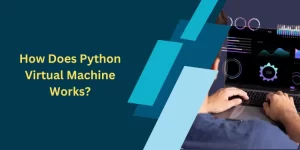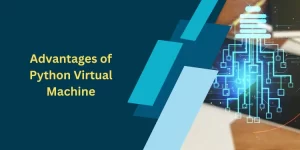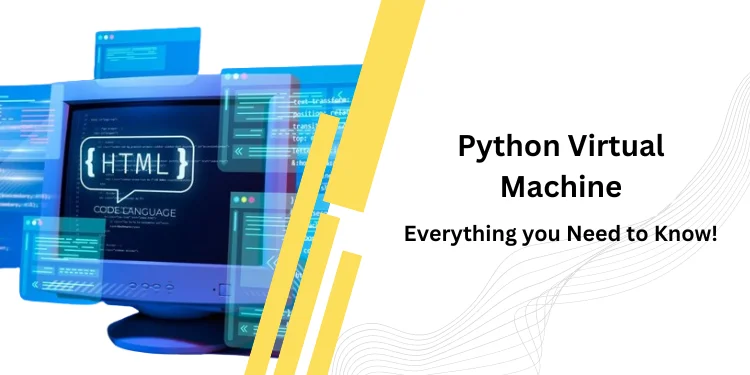Table of Contents
ToggleIntroduction to Python Virtual Machine (PVM)
The Python Virtual Machine (PVM) is the runtime engine of the Python programming language. It is responsible for executing Python bytecode generated by the Python interpreter. Here’s a breakdown of its key components and how it works:
Components of Python Virtual Machine (PVM)

- Interpreter: The Python interpreter reads Python source code, parses it into abstract syntax trees (ASTs), and compiles it into bytecode. The bytecode is a low-level representation of the source code that can be executed by the PVM.
- Bytecode: Bytecode is a platform-independent representation of the Python source code. It consists of a sequence of instructions that the PVM can execute. Bytecode files have a pyc extension and are generated by the Python interpreter when a Python script is imported or executed.
- Execution Engine: The execution engine of the PVM interprets and executes the bytecode instructions. It traverses the bytecode instructions sequentially, performing the necessary operations as directed by the bytecode.
How Does Python Virtual Machine Works?

- Loading Bytecode: When a Python script is executed, the Python interpreter loads the bytecode generated from the script into memory.
- Interpreting Bytecode: The execution engine of the PVM interprets each bytecode instruction one by one. It fetches the next instruction, decodes it, and executes the corresponding operation.
- Executing Operations: The PVM executes various operations specified by the bytecode instructions. These operations can include arithmetic calculations, variable assignments, function calls, and control flow statements (such as loops and conditionals).
- Managing Memory and Resources: The PVM manages memory allocation and deallocation for objects created during program execution. It also handles system resources, such as file handles and network connections.
- Standard Library: Python includes a comprehensive standard library containing pre-written modules and functions to handle a wide range of tasks. The Python Virtual Machine (PVM) seamlessly interfaces with these libraries, enabling users to execute complex operations effortlessly without the need to develop them from scratch.
- Garbage Collection: The PVM includes a garbage collector that automatically deallocates memory for objects that are no longer referenced by the program. This helps prevent memory leaks and ensures efficient memory usage.
- Platform Independence: The PVM provides platform independence, allowing Python code to run on different operating systems without modification. It abstracts away the underlying hardware and operating system details, providing a consistent execution environment for Python programs.
Advantages of Python Virtual Machine

The Python Virtual Machine (PVM) offers several advantages:
Platform Independence: Python code runs on the PVM, which abstracts away underlying hardware and operating system details. This ensures that Python programs can be executed across different platforms without modification.
Portability: Since Python programs run on the PVM, they can be easily ported to different environments without requiring recompilation or modification. This portability makes Python an ideal choice for developing cross-platform applications.
Memory Management: The PVM manages memory allocation and deallocation automatically, using techniques such as garbage collection. This simplifies memory management for developers and helps prevent memory-related errors such as memory leaks.
Dynamic Typing: Python is a dynamically typed language, meaning variable types are determined at runtime. The PVM handles dynamic typing seamlessly, allowing for flexible and expressive code.
Interoperability: Python can easily interface with code written in other languages such as C/C++, Java, and .NET. The PVM facilitates this interoperability, enabling Python programs to leverage existing libraries and frameworks.
Performance Optimization: The PVM includes features such as bytecode compilation and optimization, which can improve the performance of Python programs. Additionally, developers can use tools like PyPy and Cython to further optimize code execution.
Scalability: Python’s support for multi-threading and multiprocessing, combined with the capabilities of the PVM, allows for scalable and concurrent execution of Python applications. This makes Python suitable for building both small scripts and large-scale distributed systems.
Community Support: The PVM is backed by a vibrant community of developers who contribute to its ongoing development and improvement. This ensures that Python remains up-to-date with the latest advancements in programming language design and technology.
Conclusion
The Python Virtual Machine (PVM) acts as the operational core of the Python programming language. Its primary function is to run the Python bytecode that is produced by the Python interpreter. In simpler terms, the Python Virtual Machine serves as the engine that brings Python code to life, allowing it to be executed and produce the desired results.
It is responsible for handling the underlying processes and operations required for running Python programs efficiently. Think of it as the driving force behind the scenes, ensuring that your Python code runs smoothly and performs its intended tasks effectively. Without the Python Virtual Machine, Python programs wouldn’t be able to function as they do, making it a crucial component of the Python ecosystem.
Frequently Asked Questions (FAQs)
Can you run Python on a virtual machine?
To initiate the execution of a Python script on an Azure Windows VM in response to a message or event, you have the option to utilize either Azure Event Grid or Azure Service Bus to transmit the event or message. Subsequently, you can employ Azure Automation or Azure Virtual Machine Extension to carry out the execution of the script.
This process allows for seamless integration of event-driven actions with Python scripts running on Azure Windows VMs, ensuring efficient handling of events or messages and prompt execution of the associated scripts as required.
Is Python virtual machine an interpreter?
The Python interpreter kicks off its runtime engine known as the Python Virtual Machine (PVM). This Python Virtual Machine is responsible for executing Python bytecode. The interpreter loads the machine language along with the library modules and feeds it into the Python Virtual Machine.
Subsequently, the bytecode is translated into executable code, represented in the form of binary digits (0s and 1s). This process enables the Python interpreter to efficiently execute Python programs by converting them into a format that the computer can understand and execute.
What is Python virtual machine do?
The Python Virtual Machine (PVM) is a software component that offers a programming environment for executing Python code. Its primary function is to translate bytecode instructions into machine code, allowing the computer to execute these instructions and produce the desired output.
In essence, the Python Virtual Machine acts as an intermediary between the Python interpreter and the computer’s hardware, facilitating the execution of Python programs by converting them into a format that the computer can understand and process. This enables Python developers to write and run their code efficiently across different platforms and environments.
Can I install Python in VirtualBox?
You don’t have to install the Python bindings unless you intend to manage VirtualBox using a Python script. If you do plan to do so, then yes, you’ll need to install the appropriate version of Python for your Windows host. However, if you don’t intend to do that, simply deselect the Python components during the installation process.
What is byte code in Python?
CPython bytecode serves as a fundamental representation of instructions within the Python programming language. Specifically utilized by the CPython interpreter, it acts as a distinct form of bytecode unique to Python, outlining a set of directives that dictate the tasks to be performed by the interpreter.













